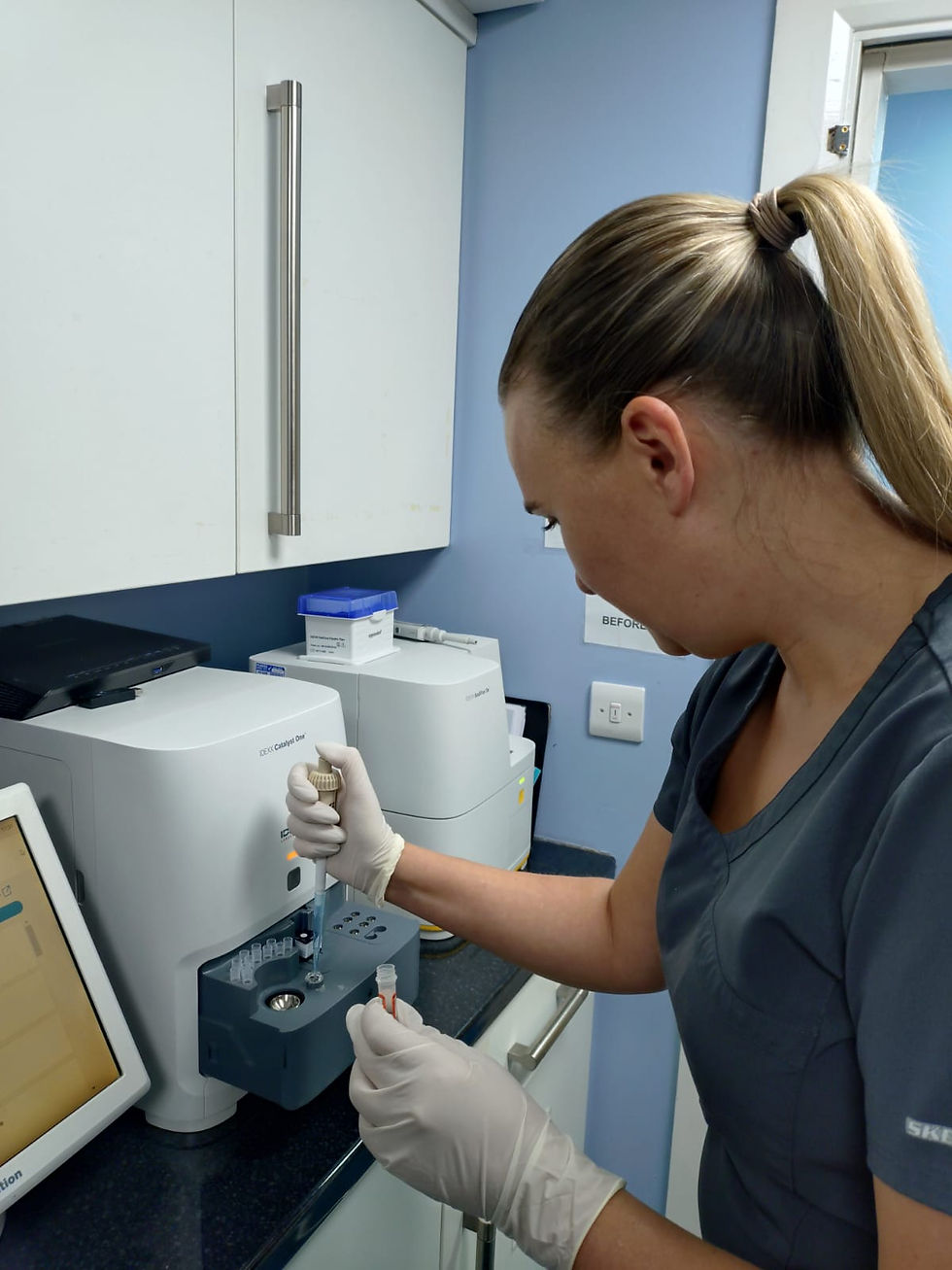Accustom your cat to its cat carrier
- carolinepallister
- Jun 16, 2021
- 4 min read
If you struggle to get your cat into a carrier, this can make things like vet visits and going to the cattery extremely stressful, both for you and your cat. Choosing an appropriate carrier and then accustoming your cat to going into it should make visits to the surgery, and other places like the cattery, much less stressful for both you and your cat.
Choosing a carrier
The best carriers are those that can be separated into two parts (the top half lifts off from the bottom part). Carriers that have a top opening as well as a front opening are much easier to get cats into and out of than those with just one door at the front. There are also other advantages to this design, as they can make vet examinations much easier for nervous cats. The carrier needs to be large enough for your cat to get into, turn around and lie down in comfortably. If you bought your carrier when your kitten was very small, you may need to replace it with a larger one once your kitten becomes fully grown.

Preparation
If a carrier has been used previously in a situation where your cat has been scared they may have deposited alarm pheromones inside it. To remove these you will need to scrub the carrier out thoroughly with a biological cleaner e.g. a 10% solution of biological washing liquid dissolved in hot water or a proprietary enzymatic cleaner. It should then be rinsed and allowed to dry before bringing it into the house.
Gradual introduction to going into the carrier
If your carrier comes apart, place the bottom of the carrier in a quiet part of a room that your cat is used to being in. Place a blanket inside, preferably one your cat has slept on so it smells familiar. Leave the carrier here all the time.

If the carrier does not come apart, do the same but leave all the doors open, and prop them open securely so your cat does not accidentally get trapped inside the carrier.
Encourage your cat to go into the carrier initially by feeding tasty treats and/or playing with toys. For example place a trail of your cat’s favourite treats leading into the carrier, roll a ball inside the carrier for your cat to chase, or use a fishing rod toy to encourage your cat to enter the carrier. You can also leave treats in the carrier at random times to encourage your cat to explore and enter the carrier on their own. Do this every day until your cat seems happy to enter the carrier on their own.
Once your cat seems completely happy to go into the carrier, put the top securely back onto the carrier but not the door. Again encourage your cat to go inside using treats and/or toys.
Replace the bedding in the carrier every few days with something your cat has slept on recently, so the carrier continues to smell safe and familiar to them.
Once your cat is happy to go in the carrier on their own with the top in place, you can put the door back on. If the door can be taken off and on easily, only put it on when you are actively training your cat to make sure they do not get trapped in the carrier accidentally. If the door does not come off easily, leave it in place but make sure it is securely propped open whenever you are not training.
Start to get your cat used to being shut in the carrier. Use some treats or a toy to encourage your cat to go into the carrier, close the door for a few seconds, then open it again. Very gradually increase this, until they are happy to stay in the carrier with the door closed for a few minutes at a time. It is really important not to rush this stage.
Once your cat is happy to stay in the carrier with the door shut for a few minutes, you can gradually progress to lifting the carrier up and moving around the room.
This whole process may take a few days or a few weeks depending on the individual cat.
In the longer term
The carrier should ideally remain in your cat’s environment permanently and become “part of the furniture”. Many cats will choose to sleep in (or on top of) their carriers. Every now and then, feed your cat or play with them when they are in the carrier, to help maintain a positive association with being in it.

If the carrier is used for a visit to the vets, wash it and change the bedding immediately afterwards to remove any unfamiliar scents associated with the surgery, or any alarm pheromones produced by your cat if they were worried.
If you are struggling to get your cat comfortable with travelling in their carrier, Feliway Classic spray may help. This can either be sprayed it on your cat’s bedding about 10 minutes before putting it in the basket or sprayed directly onto the bedding in the basket, as long as your cat is not allowed to enter the basket for about 10 minutes after spraying. This is to make sure the alcohol carrier in the spray has fully evaporated before your cat has contact with it.







Comments